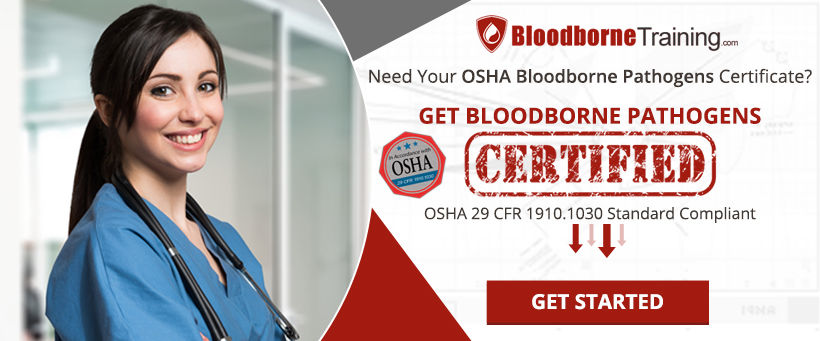OSHA Bloodborne Pathogens Training Requirements
Many professions put workers in a position to which they are exposed to human blood or bodily fluids. Obviously, this includes the roles of physicians, nurses, and other healthcare workers. It also includes some that may not be so obvious such as tattoo artists and even hairstylists. Human blood and bodily fluids can be very dangerous, as they can carry diseases from one person to another through direct contact. OSHA bloodborne pathogens training requirements are in place to ensure that at-risk professionals have the knowledge, protection, and tools necessary to protect themselves from these threats.
What Are OSHA Bloodborne Pathogens Training Requirements?
You’ll find that the training requirements for OSHA’s bloodborne pathogens standard differ greatly between employers and employees. The greater focus is on employers, as it is their responsibility to provide Bloodborne Pathogens Training to their employees, and to ensure that the workplace is as safe as possible, including providing access for staff to tools, equipment, and protective gear for use when human blood or bodily fluids might be present.
OSHA Bloodborne Pathogens Training Requirements for Employers
As mentioned, the most significant training requirements apply to employers, rather than employees. This is because, in addition to investing in training for workers, employers are also required to create a workplace with as many safeguards as possible. Most of those safeguards are also spelled out by OSHA’s requirements. For instance, some of them include the following:
For instance, some of them include the following:
Engineering Controls: This term simply means solutions that allow employees within the workplace to handle contaminated items more easily, with less risk. One example is a sharps disposal container within a medical exam room. Another would be self-sheathing syringes. There are many other examples, all of which are aimed at making it less dangerous for workers to do their jobs.
Work Practice Controls: This term simply means that the employer will create, mandate and monitor the use of proper handling, storage and disposal methods. For instance, it might apply to how contaminated sheets are to be handled prior to and on the way to disposal, as well as how they are to be disposed of within the facility. Other examples include contaminated surfaces, such as cleaning blood or bodily fluids from glass, plastic or wood.
Exposure Plan: Employers are required to complete an exposure plan that details exactly what steps must be followed in an event during which one or more employees is exposed to human blood or other bodily fluids. Note that this plan must be updated and revised every single year.
Universal Precautions: OSHA mandates that all blood and bodily fluids be treated as though they are infectious regardless of whether it is known that they carry pathogens or not. This “universal precaution” ensures that all exposure incidents are treated with the same level of care and concern.
PPE: Employers must provide all at-risk employees with access to the right types of personal protective equipment (PPE). This can include things like safety glasses and medical gowns, as well as gloves, facemasks, and more. Moreover, this equipment must be provided to employees at no cost to them.
OSHA Bloodborne Pathogens Training Requirements for Workers
While most of the burden involved with bloodborne pathogens training falls on employers, professionals seeking training prior to applying for a job will have many requirements that apply to them, as well. It’s important that any training program you complete complies with OSHA requirements in the following areas:
- Exposure Control
- Methods of Control
- Universal Precautions
- Engineering Controls
- Work Practices
- Personal Protective Equipment
- Gloves
- Housekeeping
- Regulated Waste
- Laundry
- HIV and HBV Labs
- Hep B Vaccinations
- Recordkeeping
Renewal and Recertification
While some OSHA standards are relatively lenient in when they need to be readdressed, that is not the case with OSHA bloodborne pathogens training requirements. Employees are required to complete the training prior to beginning tasks where there is a reasonable chance of contacting human blood or bodily fluids. After that, employees must receive the training at least annually.
Note that the one-year specification is a maximum. There is no minimum. Employees can retake the course multiple times within a year, and in some cases may need to. OSHA requires that if an employee’s responsibilities, duties or tasks change and those changes are in any way related to bloodborne pathogens, that employee must retake the course.
Your Bloodborne Pathogens Training Partner
Creating a bloodborne pathogens training program can be a daunting process for employers. Moreover, for professionals seeking Bloodborne Pathogens Certification outside of an employer, it can be impossible. Perhaps the best option is to work with a reputable online provider that delivers OSHA-compliant bloodborne pathogens training in a 100% online format. This offers convenience, time savings, and the ability to easily manage and monitor progress, recertification needs, and more.




